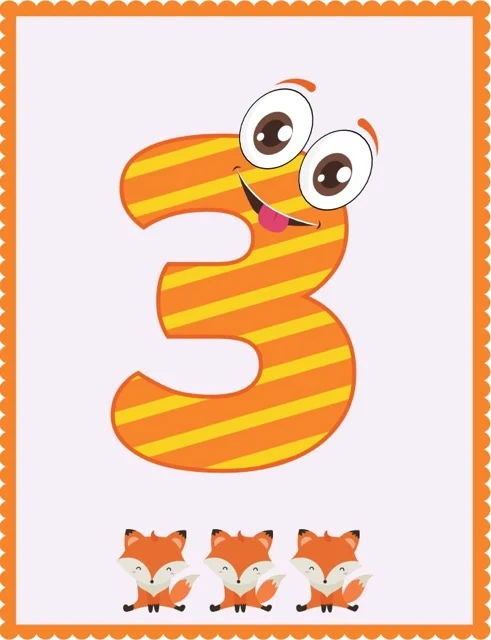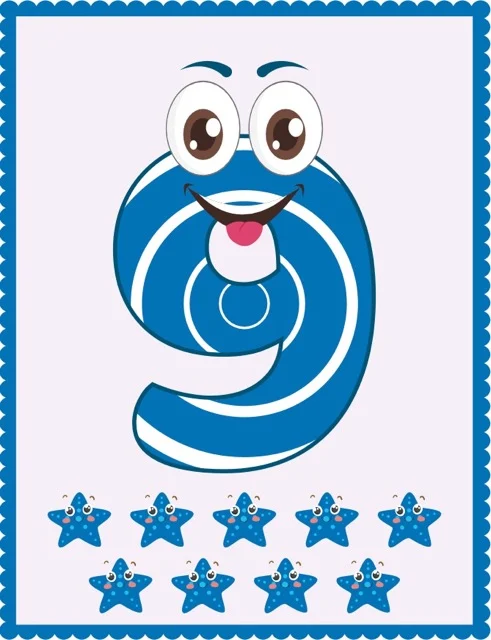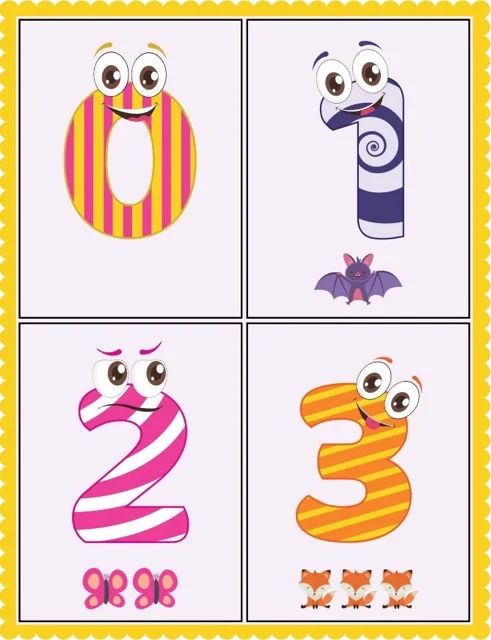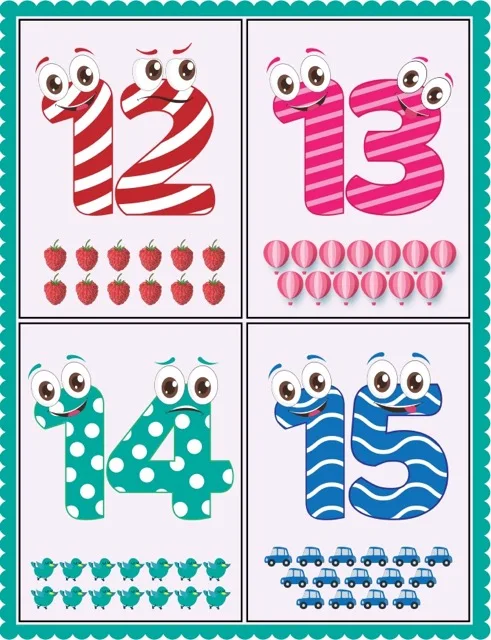Number Posters: Early Math Education
Classroom number posters, designed for preschool and kindergarten, are analyzed as educational tools. These posters use bright colors and cartoon characters to teach number recognition and counting (1-20) to young children. They cater to various learning styles (visual, kinesthetic, auditory) and offer flexible layouts (vertical and grid). While beneficial for creating engaging learning environments, potential drawbacks include space constraints and potential overstimulation. Ultimately, the posters are seen as a valuable resource for teaching foundational math skills.
Classroom Number Posters: An Educational Tool Analysis
Briefing Document: Classroom Number Posters
Subject: Analysis of Classroom Number Posters as Educational Tools
Sources:
●
"Classroom Number Posters: A Comprehensive Guide"
●
"Classroom Number Posters: A Guide for Educators"
●
"Testing Theme: Classroom Numbers.pdf" (visual source)
Main Themes:
●
Number Recognition and Counting Skills: The primary focus of these posters is to teach young children (ages 3-6, preschool and kindergarten) to recognize and count numbers from 1 to 20.
●
Visual Learning and Engagement: The posters utilize bright colors, playful designs, and cartoon characters to make learning numbers visually appealing and engaging.
●
Catering to Different Learning Styles: Beyond visual learners, the posters can be incorporated into activities for kinesthetic learners (e.g., tracing numbers, manipulating objects) and auditory learners (e.g., counting aloud, number discussions).
●
Flexibility and Adaptability: The posters are available in vertical and grid layouts, allowing for various classroom display options and learning activities. They can also be customized (e.g., adding number words, manipulatives) and used as a springboard for teaching additional math concepts (e.g., simple addition and subtraction).
Key Facts and Ideas:
●
Purpose: "Classroom number posters are designed to teach young children number recognition and counting skills in a fun and engaging way." ("Comprehensive Guide")
●
Layouts:
○
Vertical: One number per page, ideal for creating a number line or focusing on individual numbers.
○
Grid: Numbers arranged in groups (e.g., three per page), offering a more compact display.
●
Learning Style Support:
○
Visual: Colorful designs, clear number representations.
○
Kinesthetic: Tracing numbers, using manipulatives, arranging posters.
○
Auditory: Counting activities, number discussions.
●
Materials: Often printed on durable cardstock or laminated paper.
●
Customization: While not explicitly mentioned, educators can customize the posters by adding number words, incorporating manipulatives, or extending them for more complex math activities.
●
Visual Design: The visual source ("Testing Theme") shows that the posters feature a consistent design theme with a cartoon character associated with each number. This enhances visual appeal and can aid in memory and recognition.
Potential Benefits:
●
Engaging Learning Environment: The posters create a visually stimulating and interactive learning environment.
●
Multi-sensory Learning: They support multiple learning styles, enhancing comprehension and retention.
●
Versatility: Posters can be used for various activities, from basic number recognition to more advanced math concepts.
●
Durability and Longevity: Printed on sturdy materials, they are designed for repeated use.
Potential Drawbacks:
●
Space Constraints: Vertical layout might require more wall space compared to the grid layout.
●
Over-Stimulation: The vibrant designs could be distracting for some students.
●
Limited Scope: The posters primarily focus on numbers 1 to 20, potentially limiting their application for more advanced learners.
Quotes:
●
"Classroom number posters are a fun and engaging way to teach young children number recognition and counting skills." ("Guide for Educators")
●
"The posters feature numbers from 1 to 20, making them suitable for preschool and kindergarten classrooms." ("Guide for Educators")
●
"Kinesthetic learners can trace the numbers on the posters, use manipulatives attached to the posters, or physically arrange the posters in order." ("Comprehensive Guide")
Recommendations:
●
Educators should consider their classroom space and teaching goals when selecting a layout.
●
A balance should be struck between visual stimulation and potential distraction.
●
Posters can be supplemented with additional activities and materials to cater to different learning levels.
Overall, classroom number posters appear to be a valuable tool for early childhood educators in teaching foundational math concepts. Their versatility, visual appeal, and adaptability make them a potentially effective resource for creating engaging and multi-sensory learning experiences.
Classroom Number Posters: A Guide for Educators
Classroom Numbers FAQ
1. What are these classroom number posters for?
These posters are a fun and engaging way to teach young children number recognition and counting skills. They feature colorful and playful designs with friendly characters and visual representations of each number.
2. How many numbers are included in the posters?
The posters feature numbers from 1 to 20, making them suitable for preschool and kindergarten classrooms.
3. Are there different layouts available?
Yes, there are two layout options:
●
Vertical layout: Features one number per page, ideal for displaying as a number line or for individual number focus.
●
Grid layout: Arranges numbers in groups of three on each page, providing a more compact display.
4. How can these posters be used in a classroom setting?
●
Number line: Display the vertical layout posters in a line to create a visual number line.
●
Number recognition: Use individual posters to introduce and reinforce number recognition.
●
Counting practice: Encourage students to count the characters or objects on each poster.
●
Number sequencing: Have students arrange the posters in the correct numerical order.
●
Classroom decor: Brighten up the classroom with these cheerful and educational posters.
5. Are the posters suitable for different learning styles?
Yes! The posters cater to different learning styles by incorporating:
●
Visual learners: Benefit from the colorful designs and clear number representations.
●
Kinesthetic learners: Can trace the numbers and engage with the interactive elements.
●
Auditory learners: Can participate in counting activities and number discussions.
6. What age group are these posters best suited for?
These posters are primarily designed for preschool and kindergarten students, typically ages 3-6. However, they can also be used as a visual aid for older students who are learning basic math concepts.
7. What materials are the posters printed on?
The material of the posters is not specified in the provided source. However, it's common for classroom posters to be printed on durable cardstock or laminated paper for longevity.
8. Can the posters be customized?
Customization options are not mentioned in the source. However, educators can always add their own creative touches to the posters. For example, they could:
●
Add number words: Write the number words below each numeral.
●
Incorporate manipulatives: Attach velcro dots or pockets to the posters for hands-on counting activities.
●
Extend the learning: Use the posters as a springboard for other math activities, such as simple addition and subtraction.
Classroom Number Posters: A Comprehensive Guide
Classroom Number Posters Study Guide
Key Terms Glossary
●
Number Recognition: The ability to identify and name numbers.
●
Counting Skills: The ability to count objects accurately.
●
Number Sequencing: The ability to arrange numbers in the correct order.
●
Visual Learners: Individuals who learn best through seeing information.
●
Kinesthetic Learners: Individuals who learn best through hands-on experiences and movement.
●
Auditory Learners: Individuals who learn best through listening and sound.
●
Manipulatives: Physical objects used to help students learn math concepts.
●
Vertical Layout: A display format where each number is presented on a separate page or section, one above the other.
●
Grid Layout: A display format where numbers are arranged in a grid or table format.
Short Answer Quiz
1.
What is the main purpose of classroom number posters?
2.
What two layout options are available for classroom number posters? Describe each layout.
3.
List three ways classroom number posters can be used to support number sequencing skills.
4.
How do classroom number posters cater to visual learners?
5.
Provide an example of how kinesthetic learners can engage with classroom number posters.
6.
What age group are classroom number posters typically designed for?
7.
What is a common material used for printing classroom number posters?
8.
Although customization options are not explicitly mentioned, what is one way educators could customize the posters?
9.
Based on the images provided, what is a consistent design feature used on the classroom number posters?
10.
Beyond number recognition and counting, what additional math concept could classroom number posters be used to introduce?
Short Answer Quiz Answer Key
1.
Classroom number posters are designed to teach young children number recognition and counting skills in a fun and engaging way.
2.
The two layout options are vertical and grid. The vertical layout features one number per page, while the grid layout arranges numbers in groups.
3.
(Any three of these): Have students arrange the posters in order, use the posters to create number puzzles, play games involving putting numbers in order, use the posters in a scavenger hunt requiring students to find numbers in a specific sequence.
4.
Classroom number posters support visual learners by incorporating colorful designs and clear number representations.
5.
Kinesthetic learners can trace the numbers on the posters, use manipulatives attached to the posters, or physically arrange the posters in order.
6.
Classroom number posters are primarily designed for preschool and kindergarten students, typically ages 3-6.
7.
Classroom number posters are often printed on durable cardstock or laminated paper.
8.
Educators could customize the posters by adding number words below each numeral.
9.
The posters feature cartoon characters associated with each number.
10.
Classroom number posters could be used to introduce simple addition and subtraction.
Essay Questions
1.
Discuss the importance of incorporating different learning styles (visual, kinesthetic, auditory) when teaching number recognition and counting skills to young children.
2.
Explain how classroom number posters can be used as a springboard for other math activities beyond basic number recognition and counting.
3.
Analyze the potential benefits and drawbacks of using a vertical layout versus a grid layout for classroom number posters. Consider factors such as space constraints, student engagement, and teaching goals.
4.
Design a lesson plan incorporating classroom number posters to teach a specific math concept, such as number sequencing or simple addition. Be sure to outline the learning objectives, materials needed, step-by-step instructions, and assessment methods.
5.
Evaluate the role of visual aids, such as classroom number posters, in creating an engaging and stimulating learning environment for young children.


























